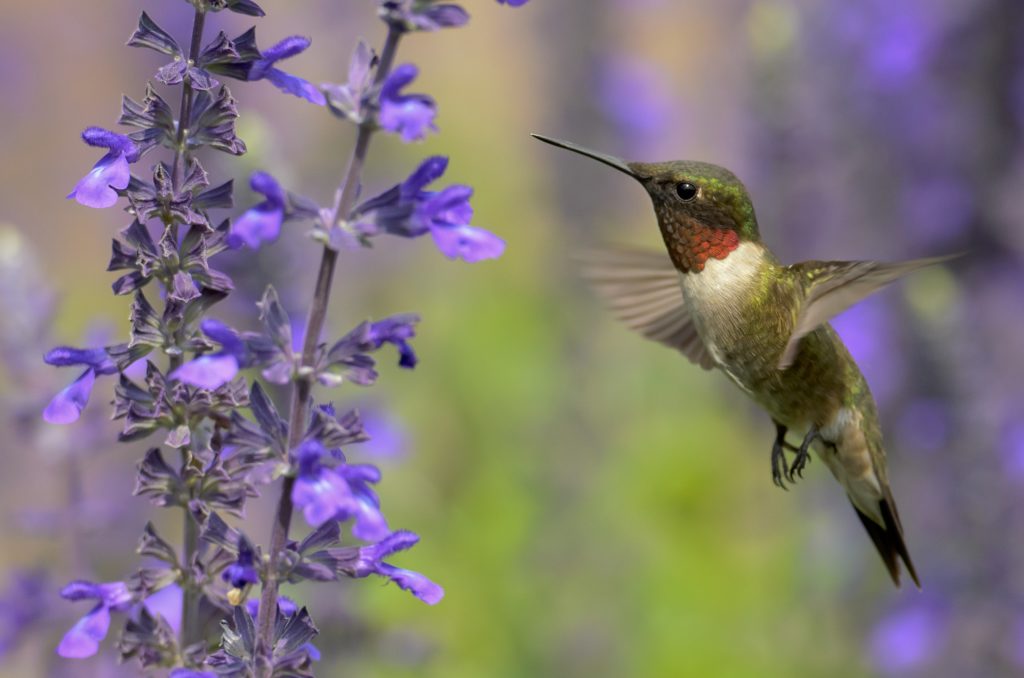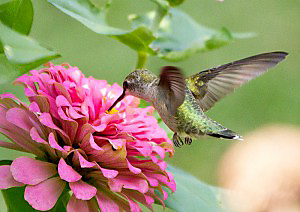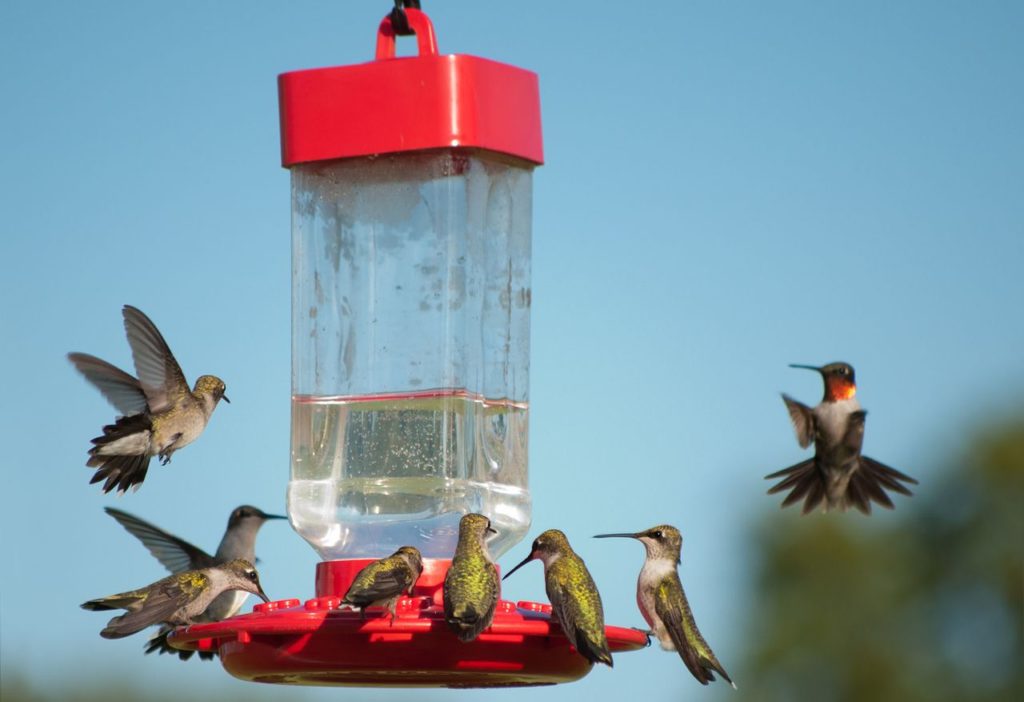by Doug Becker

It’s springtime and the Ruby-throated Hummingbirds are returning by the thousands, mostly from Central America. They are zipping through our neighborhood backyards, parks, and forest hedges as they return home to the entire eastern half of the United States and southern Canada. As most backyard birders know, just put out a hummingbird feeder or two, mix one part table sugar to four parts water, keep it clean, and make it visible from the house. Flower gardens are effective, too. Lots of people put feeders on their porch, or outside a window for easy watching as these little guys make return visits all day long. There are gorgeous hand-blown glass feeders, cool new horizontal tube feeders, the newish saucer shaped feeders and even HAND-HELD feeders!
Both male and female are emerald-green and white, but it’s the male that sports his distinctive ruby-red throat that lights up when the bright sunlight reflects off those tiny feathers. Watch your feeders and flowers as these little miraculous hummers seem to show up overnight. Yep, it’s springtime, and the Ruby-throated Hummingbirds are coming!



I am forever amazed at these tiny creatures and what they can do. They are a minuscule 2.8-3.2 inches in length and have a wingspan of 3.1-4.3 inches. They weigh in at a meager 0.1-0.2 ounces. Ruby-throats fly very fast and in a straight line, yet they can stop on a dime in mid-flight, make 90 degree turns, hover, fly backwards, adjust altitude, and continue on at full-speed. The average wingbeat for our North American hummingbirds is about 53 beats per second during normal flight. While feeding, the Ruby-throat can hover at a stop and maneuver into any position before zooming off. Interestingly, hummers’ wings don’t just flap up and down, but work in more of a figure 8 pattern. This gives them lift and control, something like a helicopter. But get this. As they migrate to and from Central America, many cross the entire Gulf of Mexico. This can be a non-stop trip of 500 miles and can take 18 hours or more, depending on weather. Like many migratory birds this takes a huge amount of energy and staying fueled for flight is extremely important. There are some that don’t make it. When they do make it back, nectar is in demand, and waiting feeders are well-received!
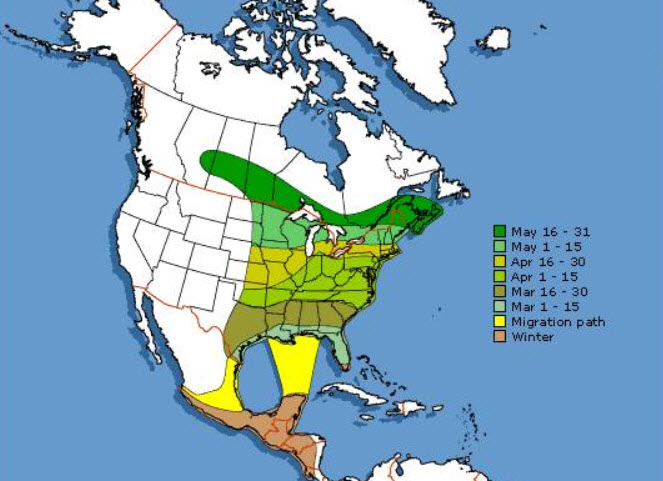
Nesting sites for the Ruby-throated Hummingbirds are usually on little branches descending downward in deciduous trees, although sometimes they choose unique locations (see below)! The female does the nest building 10 to 40 feet above ground and secures to the top of the branch rather than in a fork. Construction takes 6-10 days, and the delicate architecture is enough to please Frank Lloyd-Wright! The nest materials are mostly thistle and/or dandelion down that is held together with spider silk, and sometimes pine resin. The female stamps down the floor of the nest to make it strong but leaves the walls pliable for expansion during brood development. The spider silk is stretchy and is perfect for the little elastic nest. After all of this, bits of lichen or moss is added to the exterior probably for camouflage. The finished product measures in at about 2 inches across and 1 inch deep. Ruby-throats will return to a nest after migration however, winter winds and weather seldom leave a nest intact. And, did you know it is illegal to save a nest in the U.S. and many other countries as well? Yep!
Trees — such as citrus — provide a nesting, perching and resting area as well as cover against predators for hummingbirds.

The Ruby-throats have a clutch size of 1-3 eggs, and broods 1-2 times per season. Incubation period is usually 12-14 days, and nestling time is 18-22 days. Each egg measures 0.5-0.6 inches in length, and 0.3 inches in width. Hmm, not enough for scrambled eggs.


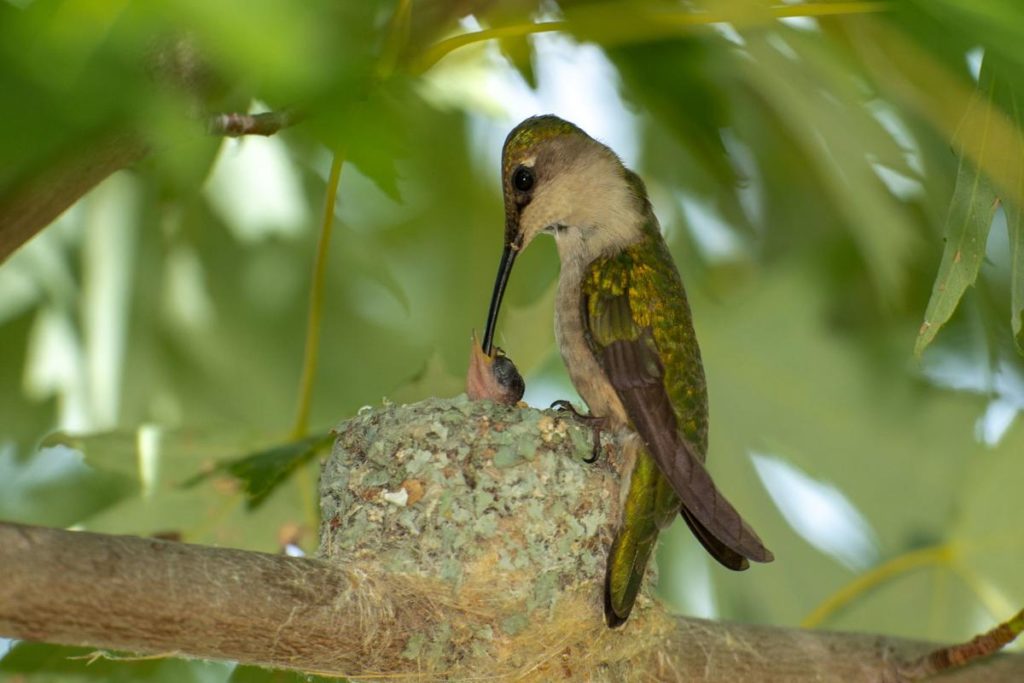
Ruby-throated Hummingbirds are a spectacle for us all to enjoy. These little guys zoom through our yards like miniature missiles. There is nothing like them. The males are exceptionally protective of their feeding spots, and it’s common to see a number of them fight over a flower patch. Even the best binoculars are seldom needed because they’re usually gone by the time you’re ready to get a glimpse. It’s best to wait ’til they’re feeding at your feeder or flowers. Today, lots of people have added a motion-sensor camera to their feeder and get fantastic results. Ruby-throated Hummingbirds are a miracle of nature. Take time to enjoy these birds. I’ll see you out there!
